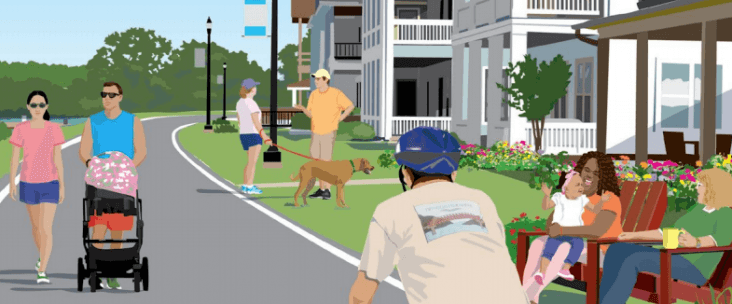Metroplan report shows slight slowdown in regional growth, hypes bike trails
by September 5, 2019 8:51 am 754 views

The latest Metroplan report shows that Central Arkansas is seeing a slowdown in its growth, but trail-oriented developments are gaining traction.
The 2019 Demographic Review and Outlook chronicles trends in the Little Rock-North Little Rock-Conway metropolitan statistical area, including six counties in the central part of the state. The latest report highlighted:
- The regional trend of slow but steady population and housing growth continues;
- Saline County continues to be the region’s fastest-growing area;
- Single-family housing construction remained steady in 2018, but multi-family construction slowed from a record pace in 2017; and
- Nearly half of all commuters are going to jobs in Little Rock.
The report notes that Little Rock is now shown with a population at 198,816 city residents. Pulaski County, the state’s most populous county, has an estimated 396,000 residents, down from 399,000 in last year’s estimate.
Over the last nine years from the last Census, Metroplan shows that Saline County has had the strongest growth of the six counties in the group’s footprint. Saline County has seen its population grow by an estimated 13.1% led by 18% growth in Benton and 26% growth in Bryant.
Faulkner County is up an estimated 10.7% this decade, while Lonoke County’s population has risen 6.6%. Pulaski County has grown 3.5% during the decade on the strength of growth in Maumelle (+10.3%), Sherwood (+10.2%) and North Little Rock (5.6%).
Among the other counties studied by Metroplan, Grant County has grown by 1.9%, while Perry County has declined by 0.9% since 2010.
“Regional housing construction ticked down in 2018 compared with the year before,” the Metroplan report said.
Single-family housing was stable, with 1,313 units started in the region’s nine largest cities. Maumelle, Conway and Bryant had the most housing starts during the year. In contrast, Little Rock and Jacksonville saw declines in housing starts.
“Multi-family housing ran more slowly in 2018 after a banner year for new construction in 2017,” according to the report. “The multifamily index below shows that, during most quarters over the past two years, the Little Rock region has exceeded U.S. trends in multi-family construction.”
TRAVEL PATTERNS & TRAILS
Central Arkansas bucks a national trend with its work commuting patterns. The region has less “orbital” suburb-to-suburb commuting seen in other large metropolitan areas and more direct to Little Rock commuting traffic.
For instance, the top seven city-to-city commuting routes over a four-year period are:
- North Little Rock to Little Rock – 13,780 daily travelers
- Little Rock to North Little Rock – 7,565
- Benton to Little Rock – 6,275
- Sherwood to Little Rock – 6,105
- Bryant to Little Rock – 5,680
- Maumelle to Little Rock – 5,290
- Conway to Little Rock – 4,720
The new Metroplan report highlights several developments and the economic impact of trails throughout the region.
For instance, Rockwater Village on the banks of the North Little Rock side of the Arkansas River has converted a declining neighborhood into a vibrant live-work-play community on the 16-mile Arkansas River Trail bike/pedestrian loop. The development, put together by Lisa Ferrell and Jim Jackson, has a mix of apartments and high- and middle-end single family homes at a variety of price points as well as a marina for boats. More development is planned for the community.
The Big Dam Bridge in west Little Rock has helped connect the bike/pedestrian trail system and featured a cycling event in 2018. That event brought out 3,436 bikers from 33 states. The Little Rock Convention and Visitors Bureau estimated that the one weekend event generated 1,093 hotel room stays, sales tax revenue of $11,000 and an economic impact of more than $1.3 million.
Read more of the Metroplan report at this link.
